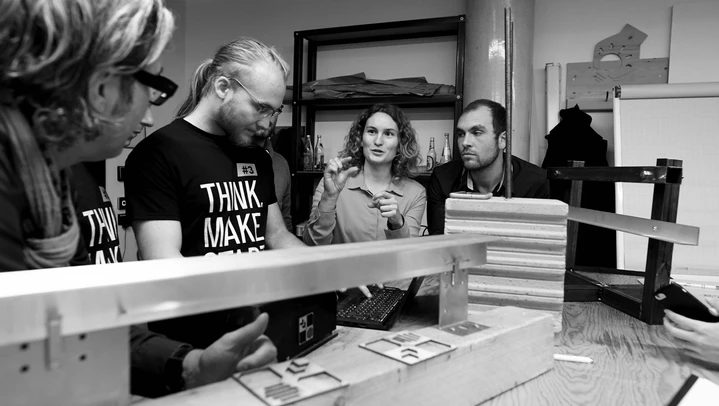
Nothing shaped the image of our earth in the Anthropocene, the age of mankind, as much as buildings, cities and built infrastructure. We leave a heritage cast in concrete to our subsequent generations. Digitalization, modern technologies and means of communication open up completely new ways of planning, building and operating buildings. Smart Building and Smart Living are no longer visions. But are these opportunities being seized? A stocktaking.
Buildings influence how we live, work or get from A to B. They create emotions, can suggest vastness or narrowness, have a depressing or mood-enhancing effect. Changes in our lifestyles are also reflected in buildings: whether climate change, digital transformation - or, very recently: the Corona crisis. Although the construction industry is very conservative, especially in Germany, it will have to adapt to the megatrends of the future, such as sustainability or the use of artificial intelligence technologies.
Looking back on the last decades of construction history in Germany, it quickly becomes clear that despite immense technical progress, there are still major deficits, for example in the coordination of construction, and time periods are still too long overall - see the Elbphilharmonie Hall or BER Airport. What is the reason for this?
Planning is often overtaken by reality
Alexander Kropp, BIM department manager at the Max Bögl Group
"A major problem lies in the planning that accompanies construction. Planning is often overtaken by reality and coordination between the construction companies and the planning department prior to execution is almost impossible," says Alexander Kropp, BIM department manager at the Max Bögl Group. "Another problem is the coordination of the service provision and the associated logistics. Particularly in the case of large-scale projects, many people are involved at the same time. Coordinating the respective services is an extreme challenge. But the logistics of material delivery and the use of resources on the construction site also depend on this. Searching for materials, waiting for cranes or deliveries or the interruption of work by other trades results in a lot of unproductive time on the building site and therefore, from a lean point of view, waste," continues Kropp.
At the same time, however, the requirements are increasing: buildings should be more energy-efficient, more flexible, less harmful to health and smarter. Comprehensive digital solutions could help here, e.g. with intelligent data transfer, digital plausibility checks in work preparation or a BIM-based building structure - but the construction industry is slow to integrate them.
Building Information Modeling (BIM), the model-based planning method based on a 3D model, can depict any building, however detailed, by linking complex data - without information being lost during planning.
What has to happen for the construction industry to embrace future trends - and what might the building of the future look like?
Our cooperation platform for the construction and real estate industry - BEFIVE - has developed a vision for 2030 together with its partner companies, analyzing the most important trends in the process: More home offices and a flexible use of office space. In the company buildings of the future, an adaptable architecture will be standard, which already requires modular and iterative planning. The use of Big Data will play a decisive role here: While in today's buildings the responsible architect traditionally receives the requirements for a building and creates a draft afterwards, in the near future requirements and concepts tailored to the needs could be calculated using data. With the help of artificial intelligence and robotics, "prefabrication" could be used to pre-produce components and deliver them ready at the right time, which would reduce time, materials, costs and sources of error.
Digitization also opens up new opportunities for citizens to be interactively involved in planning processes. The growing environmental awareness within society will also be reflected in a sustainable construction industry - e.g. through the reuse of materials in the sense of "cradle to cradle". Demographic change, globalization, urbanization and the increasing susceptibility of societies to pandemics and crises call for a rethink in urban and building planning. In cities, affordable housing is an elementary future factor.
Although new players are pushing onto the market with digital innovations, established companies in the industry are rather hesitant. What is the reason for this?
In addition, there is a culture of permanence in the construction industry, after all, the buildings should have the longest possible lifetime.
Alexander Kropp, BIM department manager at the Max Bögl Group
"One reason is the company structure and the division of work into many different trades and the associated contract structures. This makes it very difficult to view the problems from a holistic perspective across all phases and services or it contradicts the contract structures of the individual parties involved. In addition, there is a culture of permanence in the construction industry, after all, the buildings should have the longest possible lifetime. This culture also shapes the willingness of those involved to change, as everything new must first prove to be better than the tried and tested. New technologies that promote cooperation between those involved in construction and prove that real innovation is really possible are therefore the key to digitization in the construction industry," says Alexander Kropp.
Cooperation with start-ups is therefore all the more important: "Real change can only be achieved if individual participants show a new way and implement new technologies and solutions in cooperation. It is absolutely necessary to clearly demonstrate the advantages of sharing new technologies. A collaboration of different participants as practiced at BEFIVE is therefore the right way to overcome these difficulties," Kropp adds in conclusion.
Photo: Adobe Stock


